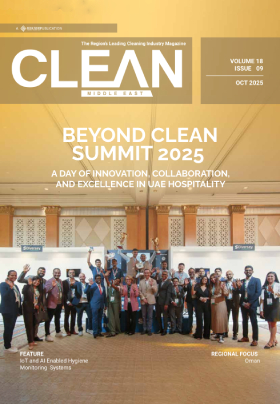
Laboratories are one of those critical areas of the hospital that deal with a plethora of viruses, bacteria, fungi, parasites, aerosols and other infective materials. Hence, maintaining good hygiene in the lab is of utmost importance! Here’s how we do it.
Having a hygiene ritual
Practicing good hand hygiene, wearing protective gear, cleaning the work-bench and the analyser surfaces with their respective disinfectants are a part of the ‘start of the duty’ ritual. Similarly, maintaining hygiene ‘on duty’ and proper disposal of the potentially infectious materials at the ‘end of duty’ are equally important and followed diligently.
The personal protective equipment (PPE) comprises apron, lab gown, surgical mask, cap, visors and gloves. We had adopted this habit during COVID times and have since continued. Strict protocols of donning and doffing the PPE in their designated areas are followed.
Different surfaces and analysers in the lab are cleaned regularly at their respective frequencies which vary from multiple times daily to once daily/ weekly and before repair. These rituals are followed religiously and check lists for the same are maintained. These processes are supervised regularly and updated.
Knowing what we do
Simply being 100% aware of the procedure being done and doing it calmly can avoid the majority of the spills and splashes! In a rare event of a spill, the lab personnel should be well trained to manage it with confidence. To ensure this, spill training is a part of the lab personnels’ induction course and regular mock drills are held thereafter. Knowing that every human sample and even waste water from the analyser is a potential biohazard is necessary. The known/suspected highly infectious organisms are handled in the biosafety cabinet. The microbiological waste is autoclaved before disposing it off in the biohazard bags.
Explicit instructions
There are clear signages to indicate high- risk areas and only authorised personnel are allowed to enter these areas to avoid accidental exposure of any infection to individuals. There is restriction of entry to outsiders in the lab. The reception area of the lab is designed in a way that restricts the spread of unknown infections that the samples may carry. Standard Operating Procedures (SOPs) and Material Data and Safety Sheets (MSDS) are easily accessible to lab staff and regular evaluation for their complete understanding and implementation is done.
Restricting a few practices
Eating, drinking and smoking are prohibited in the lab. Jewelry that can rub against the lab surfaces and carry infections are not allowed. Equipment that needs manual wiping between each sample is avoided. Cluttering of the workbenches and overcrowding of analysers are avoided to prevent cross-infection.
If the processes are in place, results do follow….!
 About the author:
About the author:
Dr. Pranjal Chhajlani is the Head of Lab at Aster Royal Al Raffah Hospital.

.jpg)
.jpg)
 Search
Search.jpg)
